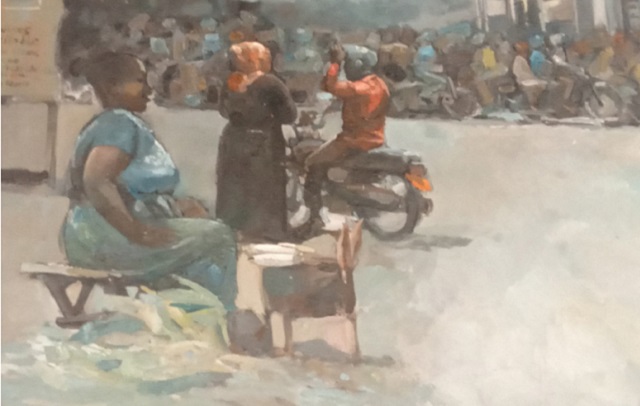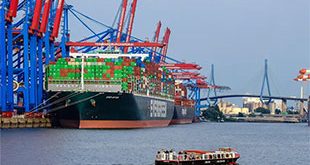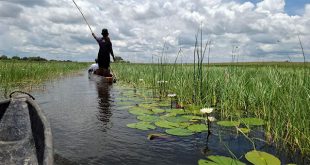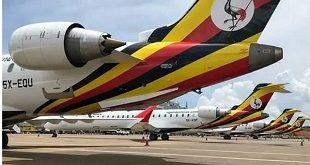
Kyeyune’s a new approaches in technique and subject matter on canvas
Kampala, Uganda | DOMINIC MUWANGUZI | The Covid-19 pandemic may have disempowered many sectors locally but not the art industry. During the pandemic and the forced lockdown, artists found it convenient to work under the peace and quiet that prevailed across the country. It was an opportunity to explore with new material and subject matter that otherwise would have been ignored if the pandemic had not struck. The ongoing exhibition by Dr. George Kyeyune at Makerere art gallery, ‘Fresh dimensions in the new normal’ is a showcase of such experimental undertakings the artist pursued in the first and second lockdowns. Kyeyune responds to the subject of experimentation by working on patched up canvases as a demonstration of innovation and working with the available resources in times of scarcity. His palette also transitions from the routine light grey to a darker grey. One may also take note of the larger canvases that dominate the exhibition. This is a departure from the mid sized canvases he is known for. This is probably because of the ample time he had in the lockdown that enabled him to work uninterrupted in his studio. As a senior lecturer at Margaret Trowell School of Industrial and Fine art, Kyeyune is routinely busy with teaching, research and academic supervision leaving him with least time to create art.
However, the subject matter in his paintings has not changed. He still paints the social economic livelihood of his immediate surroundings as a reflection of the urban poor’s need to survive in a fast transforming city like Kampala. The boda-boda (mobile motorcycle taxi) is emblematic in many of his paintings. It is symbol of economic survival for many families living in the city surburb of Kalerwe, Mpererwe, Kyebando, Bwaise and Nakulabye. But within the context of the exhibition, the cyclists seem to be less busy or often times stopping over to bargain with passengers to carry them to their respective destinations. This representation symbolizes a mood of financial desperation and uncertainty that dominated many low and mid income earners in the city.On the other hand, the passengers aredepicted stranded on the road probably because of the curfew imposed on the operations of the mobile taxis.Unlike, before the pandemic when Boda-bodas were permitted to operate at any time, the new normal restricted their movement to day time. Alternatively, being stranded by the roadside represents moments of hopelessness that filled many people’s life regardless of age and social class.
 But Kyeyune disregards this hopelessness in his work by painting Boda- bodas in large groupings at the traffic lights or street corner. He also paints the familiar road side woman selling roasted maize and Ggojja (banana plantain). This illustrates a sense of resilience and optimism that many Ugandans are known for. As the pandemic persists, many Ugandans are determined to keep on livingtheir lives. They are gripped with hope that the situation will return to normal someday. Strangely, though the exhibition is contextualized within the pandemic, none of the figures in the paintings is wearing a mask. This probably is for several reasons including, the artist did not want to distort the message in the painting by introducing a more complex motif: the mask. Additionally, the absence of masks on the figures is a honest depiction of the perception of the urban poor in Kampala. Many unluckily believed that Covid -19 was brought by the government to make them suffer!
But Kyeyune disregards this hopelessness in his work by painting Boda- bodas in large groupings at the traffic lights or street corner. He also paints the familiar road side woman selling roasted maize and Ggojja (banana plantain). This illustrates a sense of resilience and optimism that many Ugandans are known for. As the pandemic persists, many Ugandans are determined to keep on livingtheir lives. They are gripped with hope that the situation will return to normal someday. Strangely, though the exhibition is contextualized within the pandemic, none of the figures in the paintings is wearing a mask. This probably is for several reasons including, the artist did not want to distort the message in the painting by introducing a more complex motif: the mask. Additionally, the absence of masks on the figures is a honest depiction of the perception of the urban poor in Kampala. Many unluckily believed that Covid -19 was brought by the government to make them suffer!
On many occasions, critics of Kyeyune’s work have pointed out the lack of innovation by the artist. His canvases have routinely been dominated by the same palette and subject matter. However, in this exhibition, Kyeyune attempts to showcase new dimensions in his art by experimenting with technique and a fresh approach to subject matter. Notably, the subject matter has been deliberately left open to facilitate diverse interpretations from the viewer. Similarly, one observes that the artist has generally moved away from the habitual impasto technique to create a new energy in the paintings. This is probably to respond to the narrative of the new normal.
While many people may fault the pandemic for being disruptive to their daily routine of life, it otherwise precipitated new approaches to work. For Kyeyune, it enabled an environment of self reflection and therefore invited fresh dimensions in his artistic practice. New approaches in art production are critical in art, especially at the University where research and teaching go hand in hand. As the artist points out, this exhibition is not necessarily meant for commercial purposes but to create conversations with students on subjects of technique and subject matter.
****
The exhibition is showing at the Makerere art gallery.
 The Independent Uganda: You get the Truth we Pay the Price
The Independent Uganda: You get the Truth we Pay the Price





